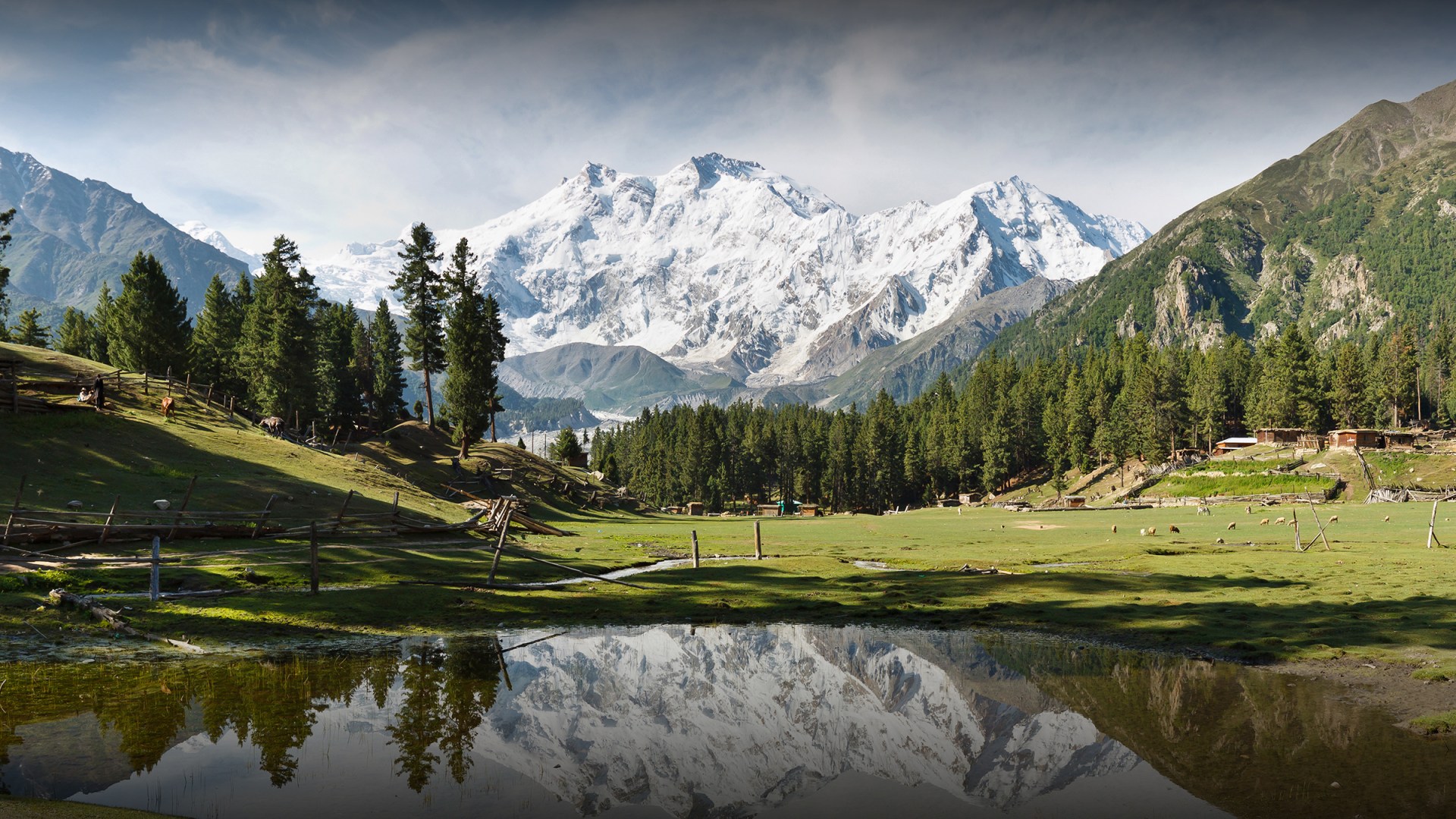Fairy Meadows
This lovely landscape, named “Fairy Tale Meadows” by German mountaineers, could be an illustration in a storybook. But as we know from Lord of the Rings and other beloved tales of adventure, enchanting endings may come with treacherous journeys. Fairy Meadows is located in the Raikhot valley of the Himalayas, almost 11,000 feet above sea level. It’s a base camp site of Nanga Parbat (“the killing mountain”). There’s only one road to Fairy Meadows, and it happens to be deemed by the World Health Organization as the second deadliest road on the planet. We’ll take their word for it, but if you have any doubts of your own, you can watch this video.
Hubble Spies a Beautiful Mess
The Hubble Space Telescope recently captured this amazing image of NGC 5408—a galaxy that is, yes, far, far away (16 million light-years from earth, in the Centaurus constellation). John Herschel discovered NGC 5408 way back in 1834. While most galaxies are spiral or elliptical, about a quarter of them, like this one, have an irregular shape. (Apparently some Instagrammers think this one resembles a killer whale.) NGC 5408’s undefinable shape is part of the reason that astronomers previously mistook it for a planetary nebula or the remains of an aging star, rather than an entire galaxy. Looking for more deep space wonder and awe? Check out Mark Galli’s meditation on the “unbelievable and unfathomable truth of the universe,” this photo essay from Richard Hammar, and Ted Olsen’s latest piece, on the recent detection of gravitational waves.
Underground Frescoes from the Early Church
Archeologists have uncovered a fifth-century church full of frescoes in Nevşehir, in the Cappadocia region of Turkey. While only a few of the frescoes have been revealed so far, the ones we can see now are vibrantly colored depictions of the prophets, apostles, saints, and scenes from the life of Christ. It’s one of the latest finds in the ongoing excavation of a massive underground city—at least five levels of living spaces, workshops, churches, and even freshwater channels—likely constructed by early Christians as a refuge from invaders. “When the church is completely revealed, Cappadocia could become an even bigger pilgrimage center of Orthodoxy,” Nevşehir mayor Hasan Ünver hopes.
Hiraeth: In the Light of Home
Those eloquent Welsh folks have a word for something we vagabond Americans can’t seem to name: hiraeth. It means something like homesickness for a home you cannot return to, or even a home that never existed at all; an intense longing for one’s motherland; a grief-tinged nostalgia for the lost places in the world where one’s heart once fit.
Thus begins a lovely post from Jennifer Trafton, writing for The Rabbit Room, an “experiment in creative community” named after the back room of the Oxford Inklings’ favorite pub. Trafton (former editor of Christian History) contemplates the significance of “the placeness of home … the incarnate reality of it, the dirt and the roof and the bones of it”—and why the hope of a fallen creation is not a “disembodied heaven” but a new earth, gloriously restored. An earth more beautiful than beautiful, as Behemoth writer Jared Wilson would say.










